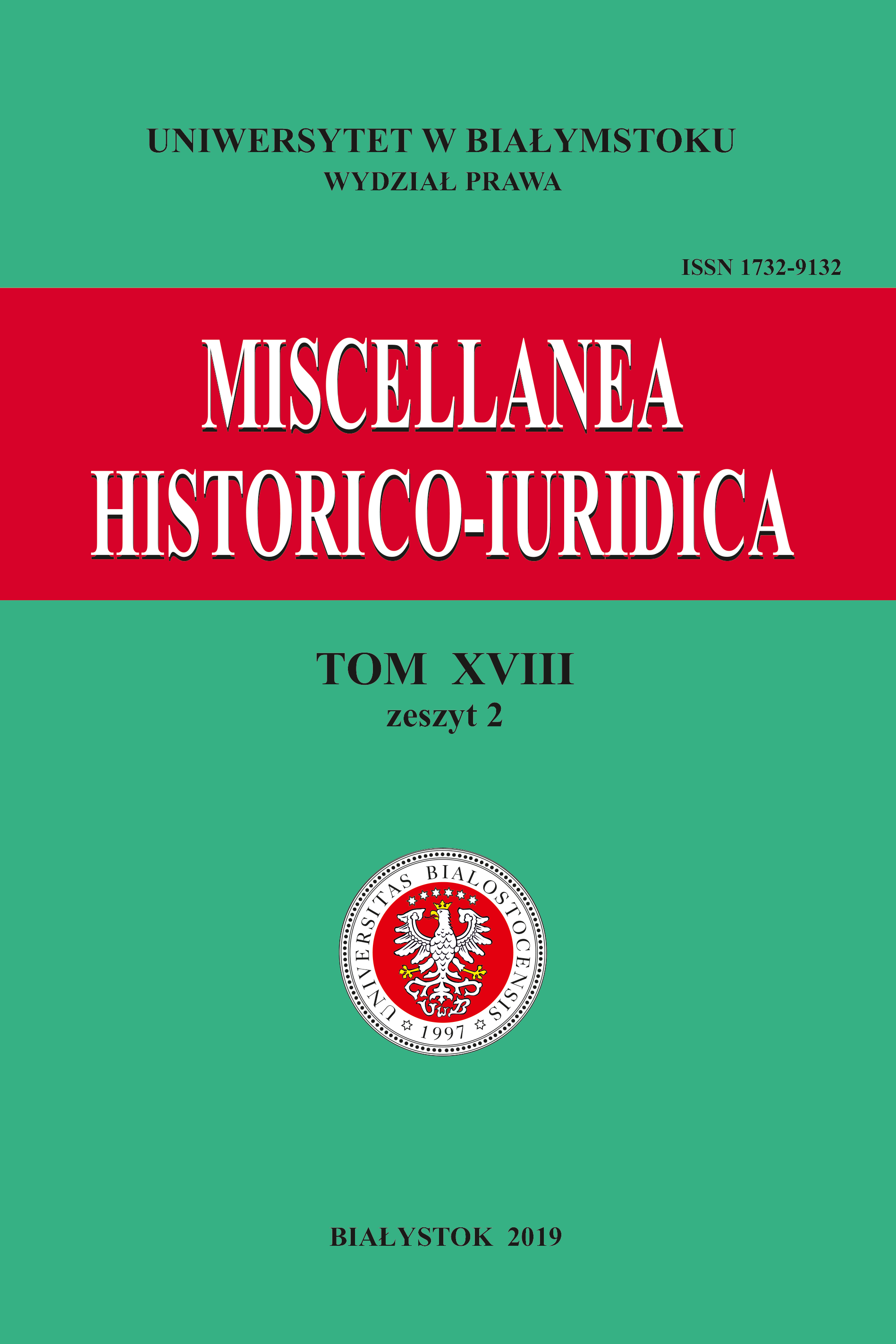Uprawnienia nadzwyczajne Prezydenta Rzeczypospolitej w świetle przepisów konstytucji kwietniowej z 1935 r.
Extraordinary powers of the President of the Republic of Poland in light of the April Constitution of 1935
Author(s): Krzysztof ProkopSubject(s): Law, Constitution, Jurisprudence, History of Law, Constitutional Law
Published by: Wydawnictwo Uniwersytetu w Białymstoku
Keywords: extraordinary powers; II Republic of Poland; decrees with the force of law; armed forces
Summary/Abstract: The subject of the article is an analysis of the President’s extraordinary powers in the Constitution of the Republic of Poland of April 23, 1935 (the so-called April Constitution). It adopted a system of government in which the President held the function of the highest factor in the state (hyper-presidentialism). Supreme state organs, including parliament, government and courts, were subordinate to him. If it was necessary to use the Armed Forces to defend the state, the President could impose martial law. In such a situation, the Constitution allowed for the implementation of a number of extraordinary powers, including issuing decrees with the force of law and the establishment of parliamentary chambers (the Sejm and the Senate) in a reduced composition. In the event of war, the President was given the opportunity to appoint the Supreme Commander and to appoint his successor, whose term of office expired three months after the conclusion of peace. The President also had extraordinary powers during the state of emergency. According to the author of the article, against the background of the April Constitution, the President could also exercise extraordinary powers in the event of failure by the subordinate organs of the state to perform the tasks assigned to them by the Constitution.
Journal: Miscellanea Historico-Iuridica
- Issue Year: 18/2019
- Issue No: 2
- Page Range: 203-225
- Page Count: 24
- Language: Polish

